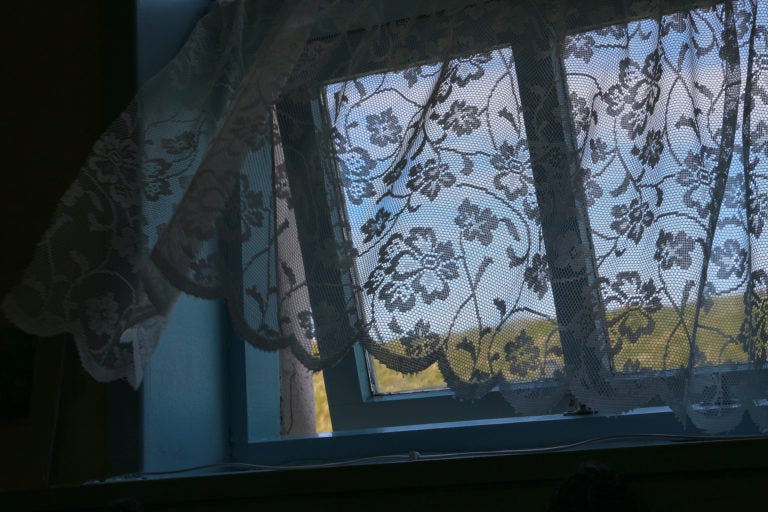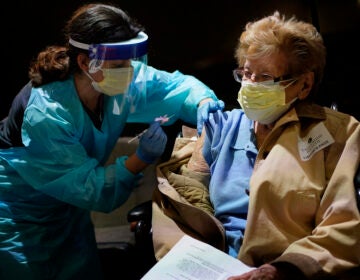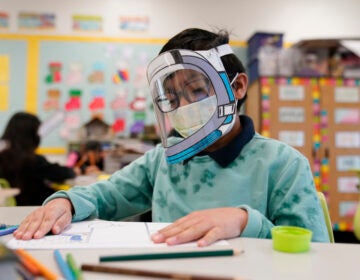Open a window: It’s the best thing you can do for your health when stuck at home
Indoor air is often worse than outdoor air due to trapped toxins, household appliance emissions and allergens from pets and dust mites.

(Bigstock/heller760)
So many of us are stuck inside, what with stay-at-home orders, social distancing, and working remotely. Still, breathing freely — particularly during a respiratory illness-inducing pandemic — is critical.
What’s the best way to ensure good air quality at home?
“Most of us spend most of our time indoors anyway. Now, we’re spending it specifically at home, as opposed to at home, in the office, and what have you,” said Joseph Minott, executive director of the Clean Air Council, a Philadelphia-based environmental nonprofit. “But air quality indoors is often worse than air quality outdoors.”
That’s because the same house or apartment you call home can also become home to trapped and circulating toxins, emissions from household appliances, and allergens from pets and dust mites.
“The thing that I always suggest in a non-professional way is to open the window and get some fresh air,” Minott said. “It’s something my mother swore by and it’s something that I do also — to sort of get the stale indoor air out and the fresh air in.”
Opening your window might be a good idea for other health reasons, too. According to the World Health Organization, poorly ventilated buildings can increase the risk of disease transmission. And the Center for Disease Control and Prevention has recommended that workplaces, schools, households, and restaurants “increase ventilation by opening windows or adjusting air conditioning” to decrease the spread of coronavirus.
Some outdoor pollutants are seasonal – for example, ground-level ozone, which Minott explained is a mixture of chemicals: oxides of nitrogen and volatile organic compounds. It occurs when environmental pollutants emitted by cars, power plants, refineries and other sources react in the presence of sunlight and heat — so ozone smog levels tend to be higher in warmer weather, generally peaking at the end of bright summer days. In the fall and early winter, on the other hand, temperature inversions can layer warm air on top of colder air, effectively trapping those pollutants in the atmosphere.
Neither season is affecting the air outdoors right now, which means it’s the best time of year to throw those windows open wide. (And if you’re really concerned, you can check the levels of ozone and particulate matter in your area by visiting the EPA’s Air Quality Index and entering your zip code.)
“Ironically, with us all being sheltered at home, traffic is almost nonexistent in the city, which means that the outdoor air quality is particularly clean,” Minott said.
That could be true even for neighborhoods that typically experience high levels of air pollution, like Nicetown or Grays Ferry, he added.
“The refinery is closed down, so the largest industrial source of pollution in Philadelphia doesn’t exist anymore, and apparently will not be replaced… and because so many people are staying home, SEPTA is running fewer buses… so if that’s what you live next to, you’re probably better off than you were before in terms of air quality.”
It’s much more important for Philadelphians to be aware of the potential pollutants inside their homes at this point, Minott said.
“Are you smoking cigarettes indoors? Are you bringing in carpets or pressed wood products with formaldehyde [in them]? Are you putting pesticides all over the place? Because anything that’s going to kill a cockroach is potentially going to have an impact on your health,” he said.
As the coronavirus spreads, and sales — and prices — of cleaning hygiene products spike, it’s important to wash your hands and sanitize surfaces regularly. But it’s also important to make sure the chemicals from those products don’t adversely affect the air quality of your home.
Remember radon
Then there are chemical air hazards that are largely undetectable by humans. Radon, for example, is an odorless, colorless gas that forms naturally from the ground. It’s the No. 1 cause of lung cancer for those who don’t smoke, and can boost the risk much higher for those who do.
Most people are exposed to radon outdoors at very low levels with no major issue. It’s indoors, when radon seeps into basements and homes and accumulates at higher levels, that the radioactive element can become hazardous.
That’s particularly true in Pennsylvania, which is a geological hotspot for high radon levels. The state Department of Environmental Protection estimates that 40% of houses in the state have radon concentrations above the amount at which the Environmental Protection Agency recommends action. And even though the toxic element tends to enter homes through rock and soil, high levels also have been found in Pennsylvania water wells.
“Everyone should have their home tested for radon,” Minott said this week. “You do not need to get someone to come and test for you. We have kits from the Clean Air Council, [or you can get one at] any hardware store, a Home Depot … you expose it for a few days, and then you send it to a lab, and they’ll give you what the results are.”
Other invisible chemical hazards, like carbon monoxide and nitrogen dioxide, can be minimized by ensuring proper installation and use of combustion appliances like heaters, as well as maintaining good ventilation and airflow — yes, this means opening the window. It’s also critical to have a working smoke detector and carbon monoxide detector in a central area of your home.
Air purifiers and humidifiers can help to alleviate common indoor-air issues with dryness, dust, or pollen.
Building materials matter
There are several potential building material-based hazards that we would do well to be aware of. These issues are much more common in homes built before 1980 and include materials such as asbestos and lead-based paint. In this case, the safest answer is to leave well enough alone for now. Asbestos-based building materials are most hazardous when damaged or deteriorating, while flaking lead paint can create dust or suspended particles that are toxic when inhaled.
“Usually, the most effective way to improve indoor air quality is to eliminate individual sources of pollution or to reduce their emissions,” reads an indoor air quality statement on the EPA’s website. “Some sources, like those that contain asbestos, can be sealed or enclosed; others, like gas stoves, can be adjusted to decrease the amount of emissions.”
The best advice Minott has to offer? Leave removal of these particular materials to a professional.
“It’s never a good idea, for instance, to say, ‘Oh, I see this pipe has asbestos in it, I’m going to get rid of it and pull it out,’ because you will have fibers lasting almost forever in the house at that point,” he said. “It can be removed safely… [but] it’s definitely not worth trying to save money by doing it yourself.”
So maybe wait on that remodel. But in the meantime: Pull up those blinds, push back the curtains and open a window.
WHYY is your source for fact-based, in-depth journalism and information. As a nonprofit organization, we rely on financial support from readers like you. Please give today.




![CoronavirusPandemic_1024x512[1]](https://whyy.org/wp-content/uploads/2020/03/CoronavirusPandemic_1024x5121-300x150.jpg)



